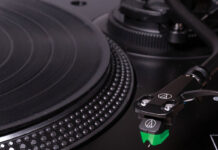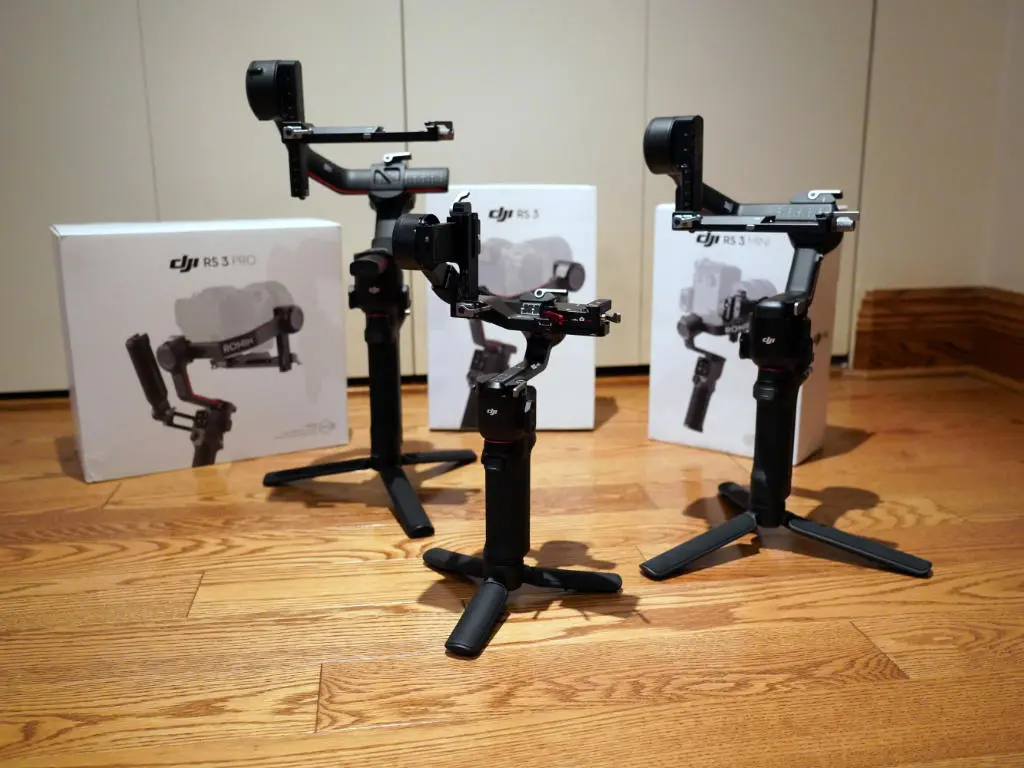
No matter what kind of video you are creating, gimbals, or camera stabilizers are necessary to give your content that smooth, Hollywood polish. DJI has products versatile enough to be at home in large scale professional shoots, as well as solo creations like vlogs. The DJI Ronin gimbal lineup is at its third iteration and features 3 models: the RS3, RS3 Pro, and the RS3 mini. Below, I’ll compare all three and will help you decide on which model is for you.
First, make sure to check out this video where I compare all three models and give my initial thoughts on which one you should get, depending on your needs.
How does a stabilizer enhance footage?
A camera stabilizer, or gimbal, is a very handy device that holds your camera body steady, no matter in which direction you move. It works thanks to several arms that are supported by motors and mounted with sensors. The sensors keep track of all the physical shifts experienced by the body and an algorithm will calculate the amount of opposing force needed to produce the exact opposite movement. The motors are noiseless and generate the opposite motion, keeping your lens directly where you set it out to be.
It eliminates virtually all shaking that you would get from hand operation. Also, gimbals feature many controls to help you achieve the desired results. For example, there is usually a joystick for direct, smooth control of your camera. It’s a different way of following a subject and you might find yourself using it more often than you thought. You can flip the camera for self-filming; very handy for vlogs. Also, most models offer some ease of use with lower angles, thanks to a separate accessory: the briefcase handle.
DJI Ronin RS3 gimbal
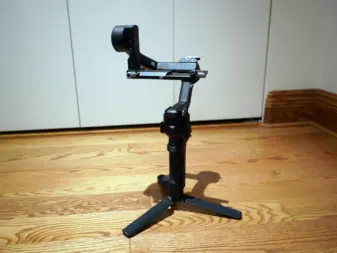
The RS3 is the main product in the Ronin lineup and packs the main features you’d look for in a gimbal. It accepts a wide variety of common camera bodies and lenses. A 1.8” touch screen allows you to navigate all the menus and adjust all the parameters quickly, so you can get back to shooting. A side switch toggles the different modes including pan follow, pan and tilt, and First Person View, FPV mode (which allows some customization).
Smart phone integration is possible and offers monitoring, remote camera adjustments, or even gimbal control. DJI promises a battery life of 12 hours for this gimbal. Optional accessories include a briefcase handle, a vertical camera mount, and a focus motor. With the motor, you can use the front dial to control zoom or focus, for a more hands on approach.
One of the best features and enhancements over the previous RS2 line is the addition of quick release plates that are easy to calibrate. Additionally, there is a fine tuning knob that really helps with balancing the camera on the gimbal. For more information on this model, you can read my full review of the RS3.
DJI Ronin RS3 Mini gimbal
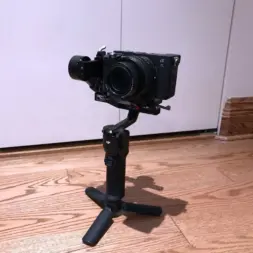
The RS3 Mini is the compact option in the Ronin lineup. It’s for those that wish to travel light and want an easier time handling a stabilizer for longer periods of time. Use it with compact bodies and certain sizes of lenses. The list of compatible equipment is available on DJI’s website and I recommend you visit it to make sure your gear fits.
The mini only weighs 1.75 pounds and is 50% smaller than the RS3, so it’s ideal for content creators that are on the move. Also, it supports vertical shooting natively. You won’t need any extra accessories.
DJI Ronin RS3 Pro gimbal
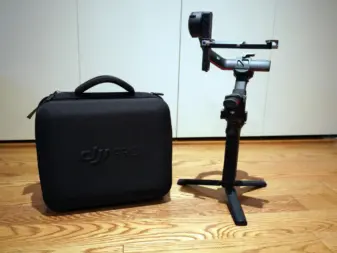
The RS3 Pro is the most feature loaded model in the Ronin lineup. The first thing to take note of is that it can handle larger, heavier cameras and lenses. Again, you can check compatibility on DJI’s website.
The first thing you’ll notice is the weight to size ratio. Since it’s built out of carbon fibre, the Pro model isn’t as heavy as it looks at 3.3 pounds. Under the hood, it has some extra options that enable it to interface with LiDAR (light detection and ranging), an advanced form of range measurement. This will tremendously help with autofocus in the hardest conditions. You’ll need to purchase a separate rangefinder to make use of this technology. Additionally, you’ll be able to mount the RS3 Pro to many different mounts including vehicles, jibs, steady cams, cable cams, and sliders.
For more information on this model, you can read my full review of the RS3 Pro.
Which RS3 gimbal is right for you?
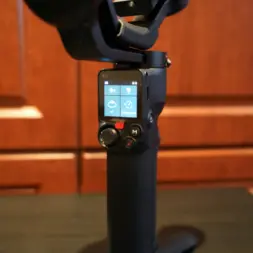
All three products of the Ronin lineup produce silky-smooth, incredible results. The stabilization is handled by a state-of-the-art algorithm that’s present in each of the models. The right choice depends on what you plan on filming. For those that wish to have a great, all-around gimbal for small to large shoots and even vlogs, the RS3 is the most versatile of the three. It’s light enough to be used for relatively long periods of time and the battery life will most likely outlast you.
If you plan on mostly working solo and travelling light, the mini is definitely for you. It’s very easy to manipulate, carry and has the lightest weight of all three models.
The pro model is intended for a niche crowd; mainly for owners of larger camera bodies and for professionals that have particular needs and access to a variety of expensive equipment. The possibility of using a LiDAR scanner is interesting if you have a particular need for ultra-precise focusing. Unless you meet these particular criteria, it’s hard to justify the higher price tag and added bulkiness.
No matter which model you choose, the DJI Ronin gimbals will serve you well and produce very smooth, polished footage. It’s a great way to enhance the quality of your content or independent production and achieve better image stability. It’s the type of purchase that will help you stand out from the vast range of content out there.

